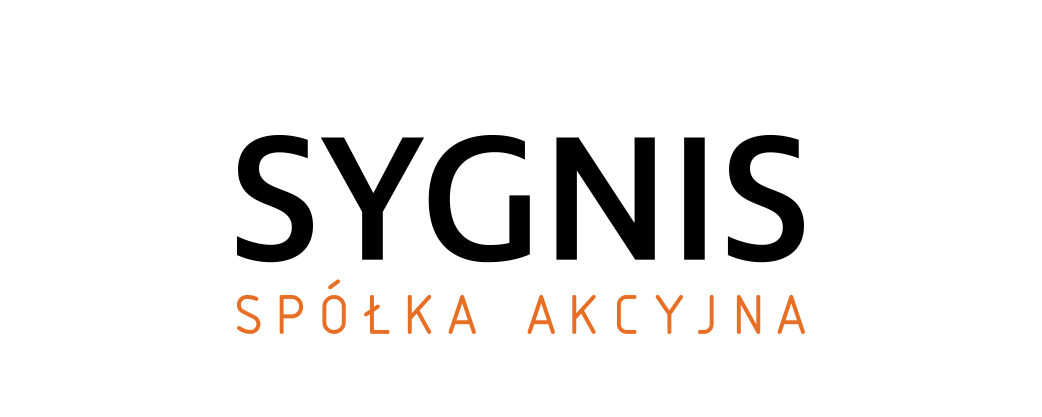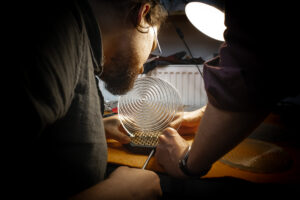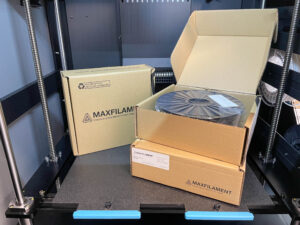A team of associates of prof. Krzysztof Woźniak from the Faculty of Chemistry, University of Warsaw (UW): dr hab. Anna Makal, Dr. Roman Gajda, Dr. Marcin Stachowicz and MA Szymon Sutuła, implementing the prof. Woźniak’s successful application, conducted a three-day research, aimed at determining for the world’s first experimental quantitative distribution of electrons in minerals under pressure. Prof. Woźniak’s application was accepted for implementation in an international competition and the team was given the chance to use one of the best synchrotrons in the world. The device of this type is located in France, near Paris, in SOLEIL. At the critical moment, the research work of scientists was supported by 3D printing technology and rapid prototyping of parts, which were created at Sygnis New Technologies.
The group led by prof. Woźniak from the University of Warsaw regularly conducts research in foreign research centers, mainly large scale facilities at DESY (Hamburg), BESSY (Berlin), Diamond (UK), Spring8 (Japan), APS (Chicago, USA) and ILL (Grenoble) ). In this case, they could use the crystallographic tools at the synchrotron in SOLEIL (Paris) for three days. All their efforts and meticulously planned tests could have been thwarted by a technical problem with a small adapter that did not fit the devices at the test station. They turned to Sygnis New Technologies with their problem, looking for a fast solution. In the process of rapid prototyping, technologists from Sygnis quickly planned, designed and delivered the necessary adapter.
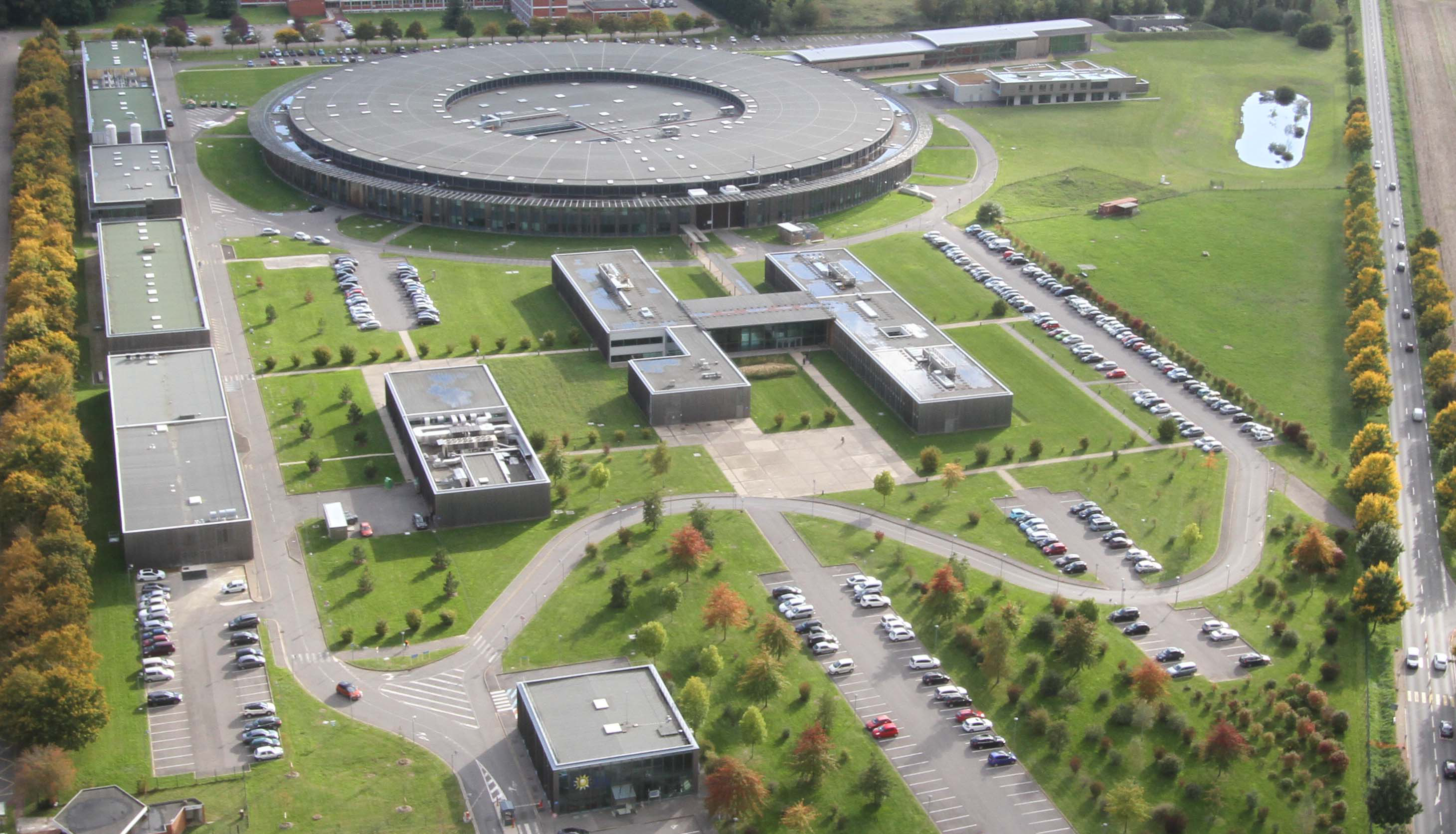
Source: L. Persin – CAVOK Production
What are these scientists actually doing?
The synchrotron in SOLEIL (Source optimisée de lumière d’énergie intermédiaire du LURE) is a source of radiation – thanks to its design you can receive electromagnetic radiation in a wide range: from infrared to very hard x-rays. Its construction can be imagined in this way: electrons moving in a very large circle (up to several hundred meters long) are accelerated to speeds close to the speed of light, thanks to which they begin to emit radiation of interest to us, used in measuring stations built around the circle dedicated to various type of experiments. There are several such objects in Europe – they differ in the obtainable wavelength (we will explain it in a moment), among others: “Diamond” in the British Isles, “PETRA” in Germany, “MAX IV” in Swedish Lund, as well as “SOLARIS” in Poland. However, one of the best synchrotrons in the world, “Advanced Photon Source”, is located in Chicago, USA.
In the synchrotron in SOLEIL you can carry out a wide range of experiments, e.g. spectroscopic – i.e. checking the composition of the material, and crystallographic – we can examine the internal structure of the material, how the atoms are arranged in the crystal and how the structure changes under the influence of external factors. A subgroup of experiments such as those carried out by a research team from the University of Warsaw, called high-pressure crystallography, boils down to the fact that materials are subjected to pressure from several to several dozen gigapascals [GPa] (1 gigapascal corresponds to 10 thousand atmospheres [1]). Pressure chambers used during the described tests are able to reach a dozen or so [GPa]. This pressure is comparable to what would affect the object at the bottom of the Mariana Trench or even deeper in the Earth’s shell.
The synchrotron in SOLEIL is a system of research stations, each of which is dedicated to a different type of fundamental or material research. In the laboratories at the University of Warsaw there are also devices called diffractometers, on which measurements can be made, but there are restrictions on the length of the wave that can be obtained. If we have, for example a molybdenum lamp, the radiation length is 0.73 Å (angstrem) [2]. In turn, with the silver source we can get 0.56 angstroms. The shorter the wave, the greater the resolution and the more accurate we can measure the parameters of interest to us. The Synchrotron has a very high-energy beam that has 30,000 keV (kiloelectronvolts), which translates to 0.41 angstroms. This allows obtaining very high resolution results [3]. By analogy, before the flight of the New Horizons spacecraft, astronomers had images of Pluto that were 6 pixels. Thanks to the photos taken by the probe, they could see the image of the planet’s surface in HD – that is, those photos already had 2 million pixels. In a word, thanks to the trip to the Synchrotron we can see more and more accurately.
[1] “Atmosphere” – corresponds to the average atmospheric pressure at sea level on Earth.
[2] A unit of length equal to 10-10 m. Not a SI unit. It is used to numerically expressing very small length values, comparable to the size of atoms. Often used in chemistry and physics to describe objects and phenomena occurring on the atomic scale, where the use of SI units would require the use of fractions (1 Å = 0.1 nm).
[3] In this case, we can interpret the resolution as the resolution of the monitor. The higher this value, the finer the details in terms of the crystallographic structure, i.e. the structure of the molecule and the electron density distribution, that we are able to see. This allows us to determine not only where the atoms are, but also what the bonds between them look like.
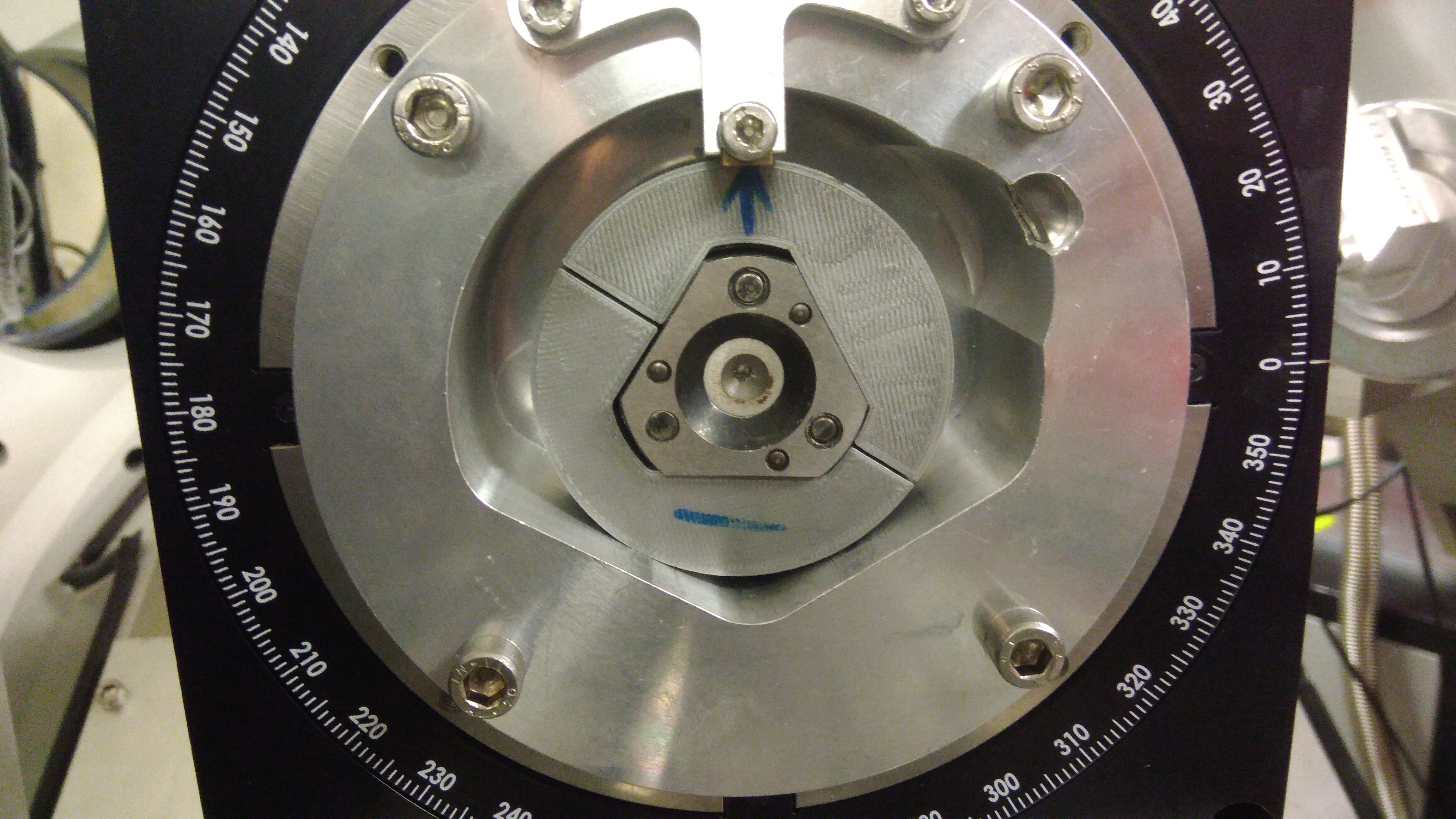
Adapter needed now!
Synchrotron at SOLEIL is an independent French research institution. Teams from around the world apply for measuring time at this center in a competition procedure. Projects are evaluated by a team of independent scientists. The more innovative and challenging the project, the greater the chances of winning. Researchers from the University of Warsaw succeeded, they got 3 days of measuring time at one of the research stations – CRISTAL. The challenge for us was to do as many experiments as possible in 72 hours. We expected a situation in which, after arriving at the station, we would have to wait half a day for the staff at the station to prepare an appropriate adapter for us, the more that our arrival was on November 9-11, which is not enough that on the weekend, in addition national holiday – recalls Ph.D. Anna Makal.
At the synchrotron in SOLEIL, at the CRISTAL measuring station, x-ray measurements under increased pressure are possible. Increased pressure is obtained by enclosing the sample (e.g. single crystal of the test substance) in the so-called pressure chamber with diamond anvils (Diamond Anvil Cell). High pressure generation boils down to the fact that said sample is squeezed between two diamonds. The process does not affect the temperature. The chamber is constructed in such a way that it can be attached to the goniometer on the measuring line. This goniometer, however, differs significantly from the tool used by the team from the University of Warsaw where researchers use the so-called four-wheel diffractometer.
The chambers available on site did not suit our researchers, so they wanted to use theirs. Unfortunately, the chamber was not adapted to what the measuring station could offer, which forced the use of an adapter between the investigator’s chamber and the experimental stand. Just at this point, the help of 3D printing and technologists from Sygnis New Technologies turned out to be priceless. In a very short time the adapter necessary for the correct operation of the devices was designed and printed in FDM technology. The material from which the object was made was PLA (polylactide) in gold and silver. All the work was done with extraordinary accuracy – thanks to rapid prototyping and several iterations of the model, it was possible to support UoW scientists. FlashForge machines were used in the production. The printout was created based on plans and projects created by Sygnis in such a way that it matches the planned experiments. Thanks to the support of Sygnis, a group of researchers could fully use the time they got at SOLEIL. 3D printing allowed express design, prototyping and delivery of an element that would not have been possible to produce in any other way.
For some must watch, while some must sleep
It was the first such trip of our research group. It was important because it was to check whether the type of experiment we are interested in can be carried out at this particular station. It would be convenient for several reasons – the station is located in France, so relatively close, access is easy, you can easily organize and conduct an experiment there in a short time. We divided into groups and made the most of the time offered to us by setting out two 12-hour shifts. It was very important to us that our rehearsals could take place – describes doctor Makal.
Now the research team from the University of Warsaw is planning further experiments. The results of recent studies have just been published in the scientific journal IUCrJ titled “Experimental Charge Density of Grossular Under Pressure – a Feasibility Study.” The results of the experiments will also appear at international conferences, e.g. European Conferences of the European Crystallographic Union and International Crystallographic Union. – The first trip showed us that the research station at SOLEIL meets our needs. Next time we will go to the examination of specific materials, e.g. grenades. We plan to go to in a group of four. This is the most optimal system – adds Ph.D. Anna Makal.
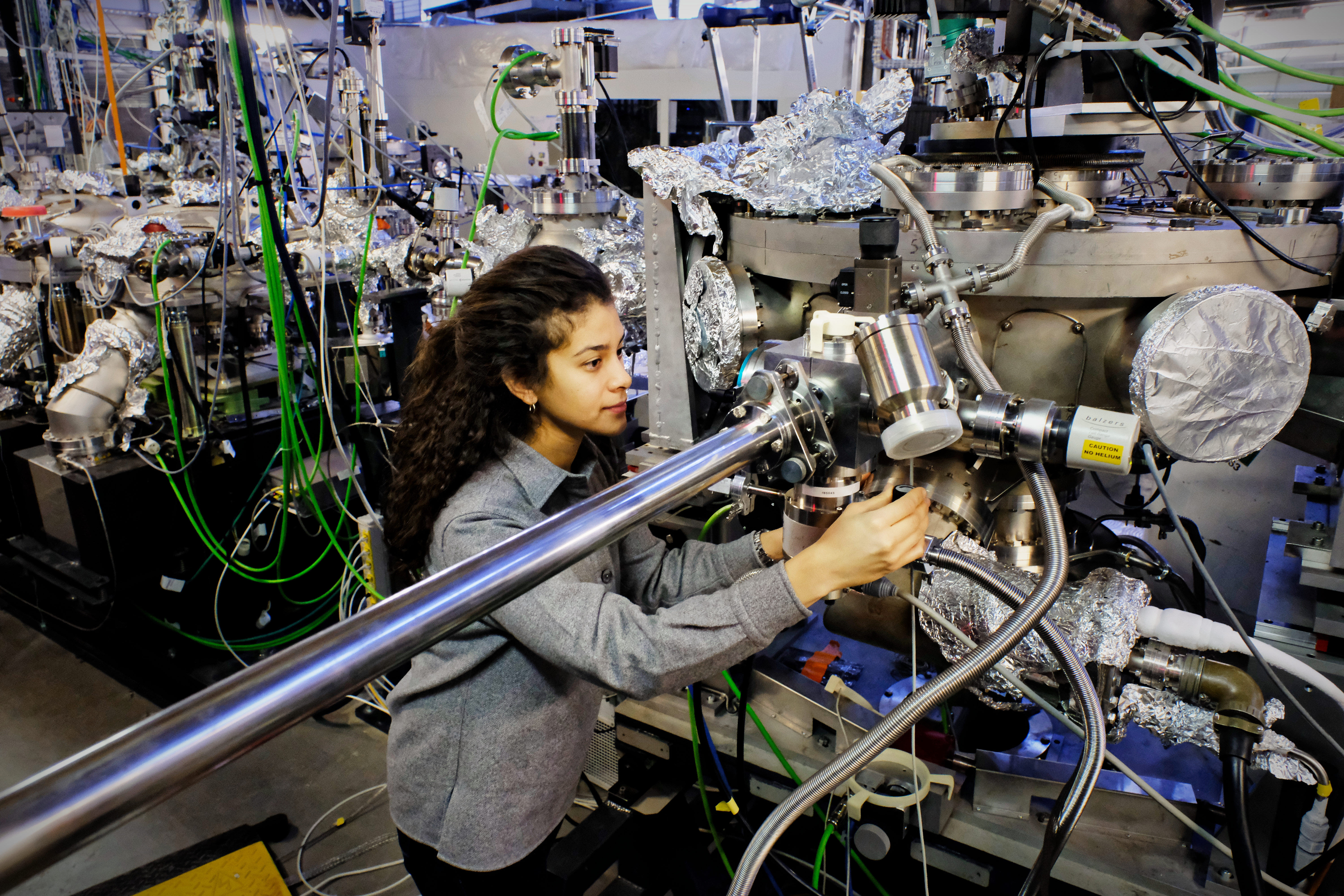
See a little wider
Dr. Anna Makal and Roman Gajda from the research group led by prof. Krzysztof Woźniak, run the basic examination. In order to get a grasp of the importance of their work, one can cite the example of pressure tests [4] aimed at checking whether a given pharmaceutical substance will be suitable for placing in pills. These types of tests also provide the basis for the production of various types of sensors. Another area of research recently investigated by Dr. Anna Makal includes fluorescent materials. Her research focuses on how light emission will change if these substances are subjected to changing pressures. At SOLEIL, scientists investigated the flow of charge, not by interpreting spectroscopic data, but in such a way as to draw an exact map of the electron migration. This is exactly what you need high resolution for.
In the long term, the study of electron flow affects the fundamentals of the production of diodes, photosensitive elements, photovoltaic cells and renewable energy sources. These types of experiments, carried out, among others, by a team of scientists from Warsaw, influencing the development of innovation in Poland, contribute to breakthroughs in science and, ultimately, to changing the world around us.
[4] Pressure tests evaluate how the structure of a material responds to pressure. In this case it was the first successful experimental study of changes in the electron density distribution in the Grossular mineral under pressure.

